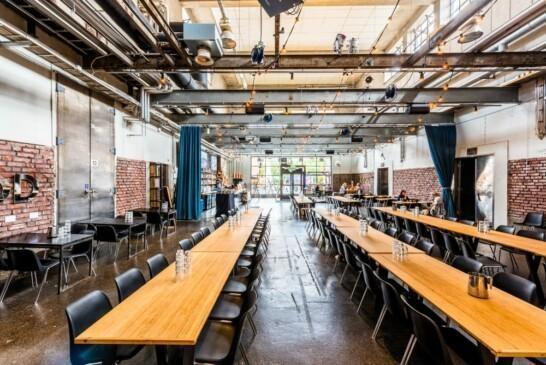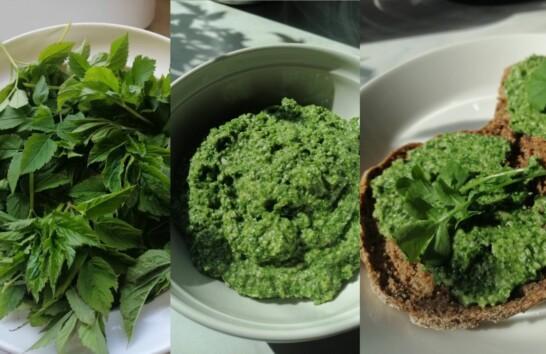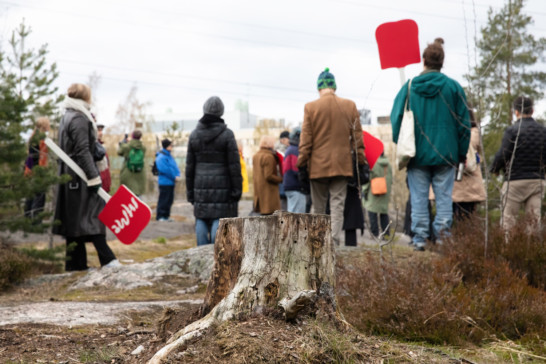News
IHME Helsinki 2023 6/6 Chicago Boys at Stoa Cultural Center
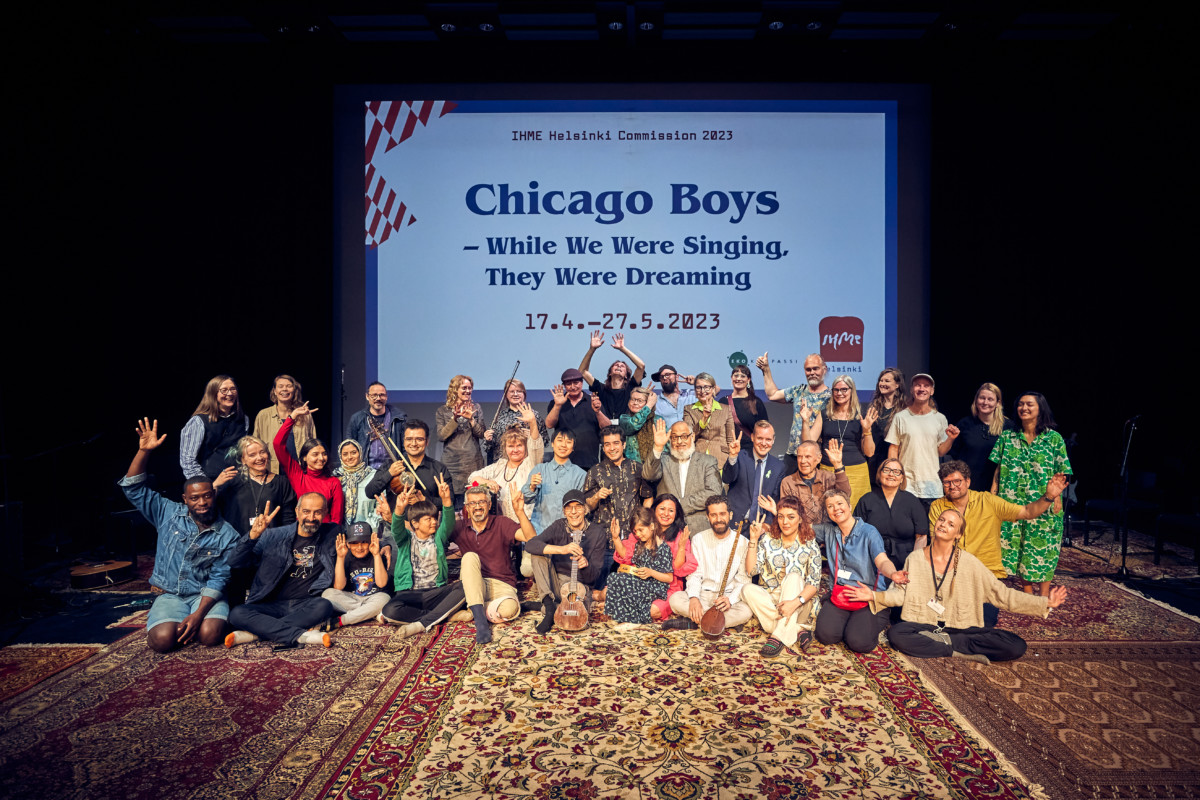
Chicago Boys Searching for the Soul of the City
The last public rehearsal for IHME Helsinki Commission 2023, Chicago Boys – While We Were Singing, They Were Dreaming, was held at Stoa Cultural Centre on Saturday, 27 May 2023. The evening brought together the entire six-week project in both Helsinki and Sulaymaniyah. It started with a joint meal, socializing and a video greeting from Sulaymaniyah.
The Chicago Boys project has been carried out in Hiwa K’s hometown to coincide with the Helsinki Commission. In Sulaymaniyah the group has renovated a vacant contemporary-art museum, organized a discussion, music and film programme, tended its garden, planted trees, and more. In a collaboration between schools, the first book has been published in Kurdish on ecology and nature conservation for use by village schools.
In Helsinki, the participants in Chicago Boys visited five chosen locations that are threatened in one way or another by neoliberal values, urban planning, and development aimed at continuous growth. In response to the discussions that arose at these locations, we assembled a seven-person panel for the last public rehearsal to jointly consider where the soul of the city can be found and how urban planning should be implemented in the sustainability transition.
The five locations were Lapinlahti Hospital, Puhos Shopping Center, Riistavuori forest, Stansvik forest and Matokallio forest. The situation and development at Suvilahti also made headlines during the project. Juhana Hurula (DIY Helsinki ry), Marja Keränen (Riistavuori resident activist), Ville Pellinen (Lapinlahten Lähde), Jaana Patrakka (Matokallio movement), Varpu Mikola (Nomaji – landscape architects), Hossam Hewidy (Aalto University) and Sara Zaman (University of Helsinki) participated in the panel.

The soul of the city in the sustainability transformation
To the question about the city’s soul, all the panellists answered in the same way: people make the city with their own creativity, care, and trust. In order to feel comfortable, they need places to breathe, spaces that are open and accessible to everyone to spend time and fulfil themselves. That is why the city needs its forests, parks, and beaches, which also have space for non-human species. The discussants said that Helsinki is still unique in its greenery and easily accessible seashores, which are also an important part of the city’s soul.
Nevertheless, during the Chicago Boys project, we have heard how Helsinki’s growth and development plans threaten many local forests and the lively urban culture that has developed from the grassroots level. How, then, should Helsinki be developed, so that, at the same time, diverse public spaces are secured for different city dwellers and the sustainability crisis is taken into account?
The panellists had a variety of comments on this. Juhana Hurula said that the administration of Helsinki could be decentralized to be closer to the different districts, so that the voices of the people in the districts would be better heard. Planning should take place from the bottom up, so that citizens are more involved.
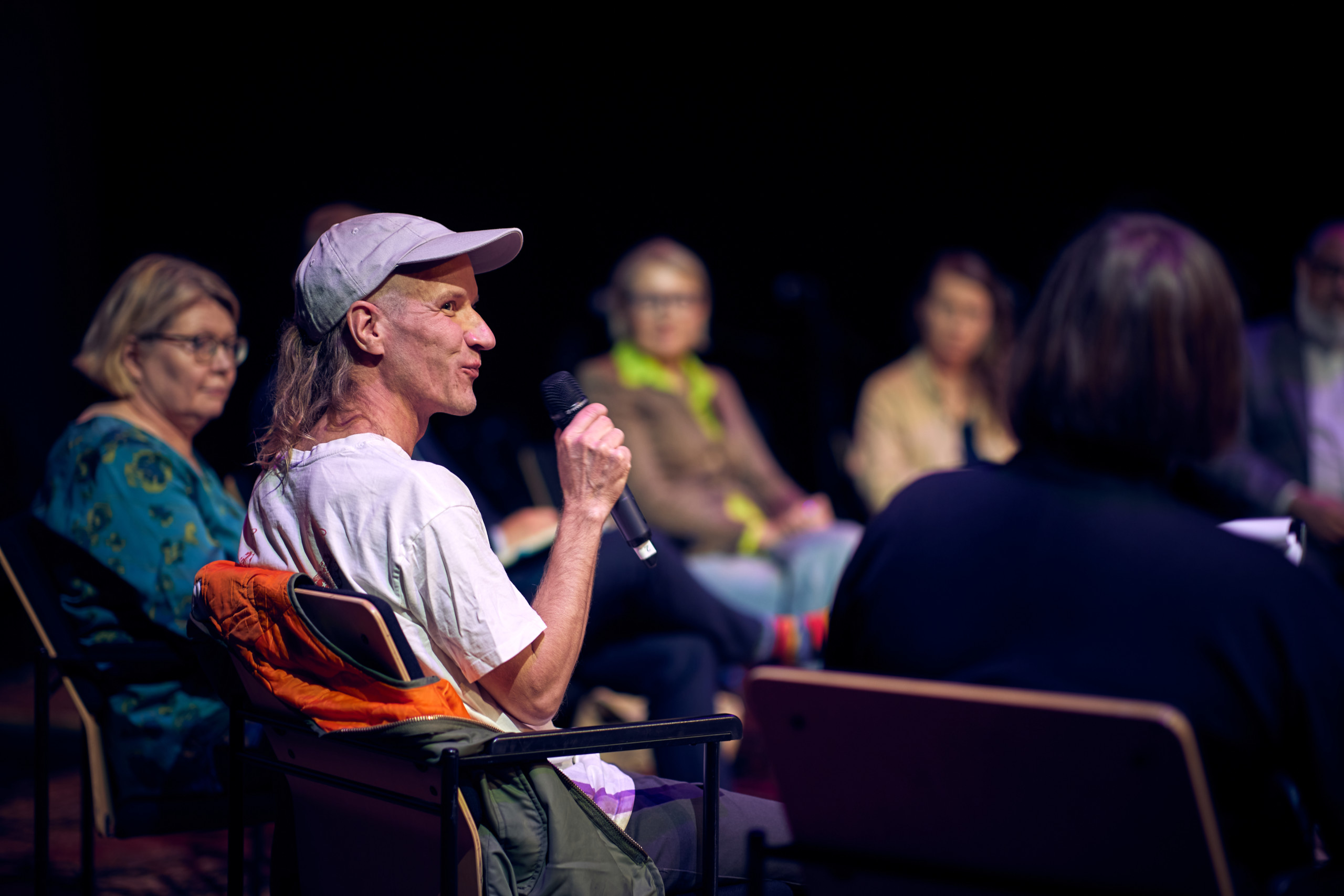
Marja Keränen added her own example of the actions and efforts of Riistavuori activists to influence decision-makers, by making their own report and counterproposal for construction in Riistavuori forest. Keränen also said there should be much more discussion and cooperation between decision-makers and citizens. Ville Pellinen agreed with both, saying that city dwellers, not commercial actors, should be “in the driver’s seat” in urban planning. Instead of pursuing profits, the goal should be to enable as many people as possible to have a good, healthy life in the city.
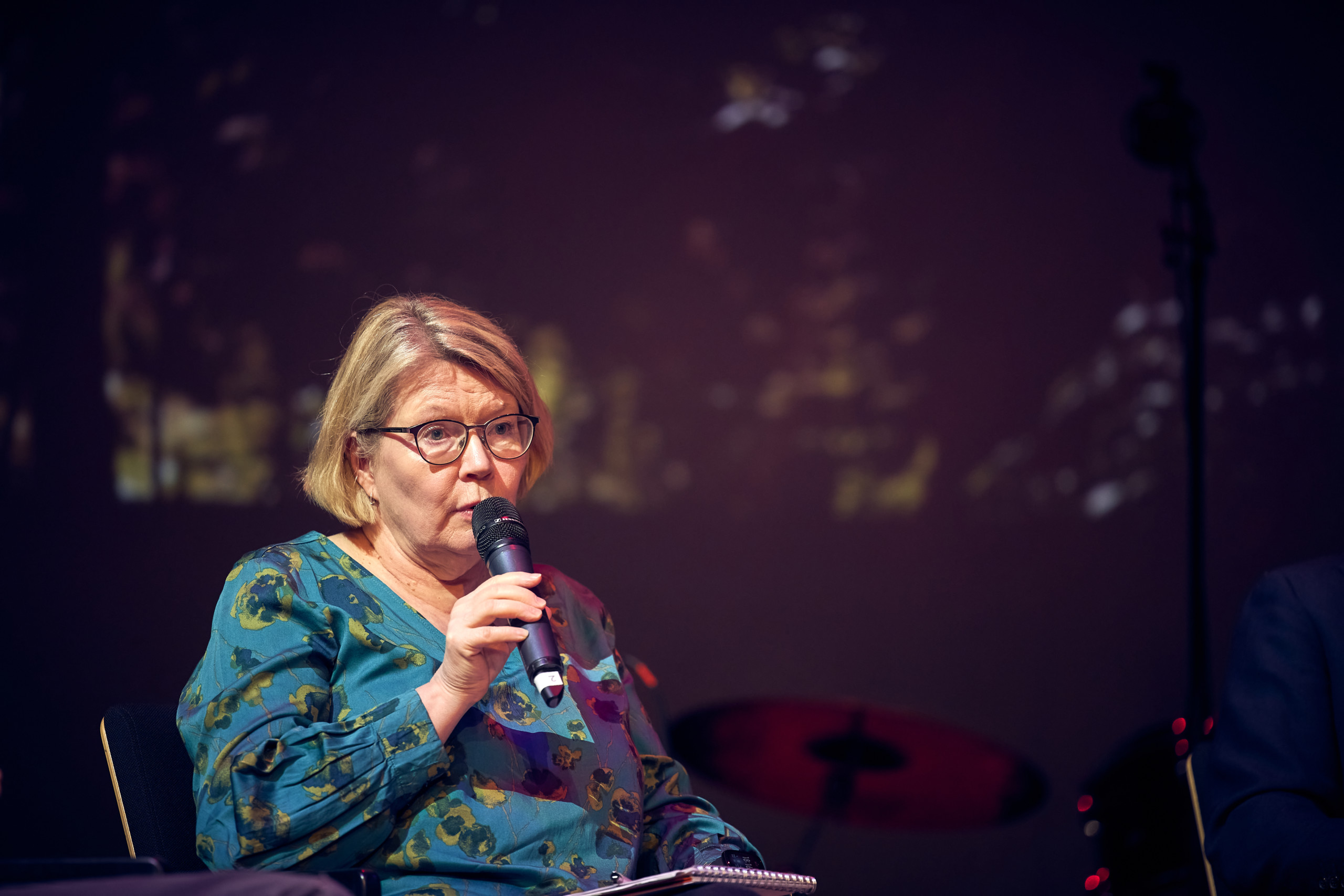
Pellinen put forward four clear views on how urban planning should be done in the sustainability transition: nature should be renewed instead of destroyed; people should have an opportunity to influence decisions, including between elections; the city and its citizens should be prioritized in planning; and the city should invest heavily in open spaces accessible to everyone.
Jaana Patrakka of the Matokallio movement agreed with Pellinen’s account, pointing out that old plans and zoning should be re-evaluated. For example, the zoning of the Matokallio indoor speed-skating rink was done at the start of the 2000s, but the world and the environment are no longer the same as they were then.
Here, Varpu Mikola pointed out that, in the past, townspeople did not object to these plans because there was much more surrounding forest than there is today. For Mikola, from a landscape architect’s viewpoint, the city is made up of many layers, and the social layer has been neglected. Much more attention should be paid to this in town planning. However, according to Mikola, we lack adequate tools and practices for cooperation with city residents. Participatory planning would be something to move towards, but that is not yet happening because the structures are too rigid.
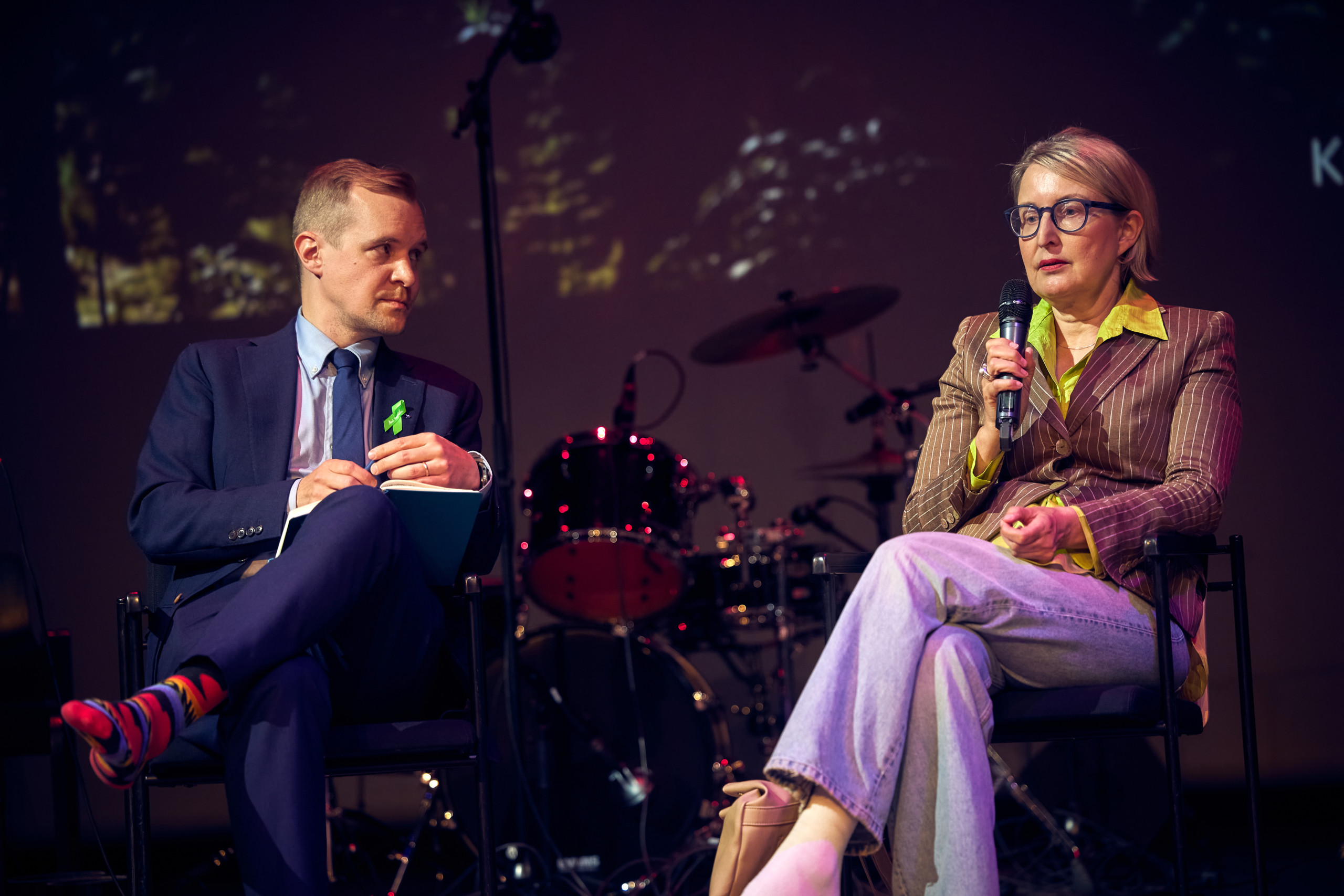
Use of power or trust and care
Hossam Hewidy brought up the use of power inherent in the mechanisms of land use, which prevents many good values being implemented. According to Hewidy, there is currently a tendency in land-use planning to come up with excuses in order to get building permits, even though that should not happen. In Helsinki, city planners are the ones who interpret construction law, but are simultaneously the landlord’s representatives.
Hewidy sees a lot of power here, which makes actions that involve citizens very superficial. Inclusion currently comes into play at the point where the decision on land use has already been made. Hewidy emphasized that discussing decisions that already been made is not inclusiveness, but the use of power. Joint production of information about the place’s current identity is needed before any decision is made.
Sara Zaman agreed with these views, saying that, at the moment, actions that involve citizens in planning remain at the gestural level, rather than actually establishing trust between citizens and decision-makers. Zaman thinks we should now question the trend towards growth, which is guiding the city’s development. Pellinen added that Helsinki’s growth rate is currently based on the highest possible estimate for its growth, but thanks to activists and the falling property market, there is still hope that this trend will change.
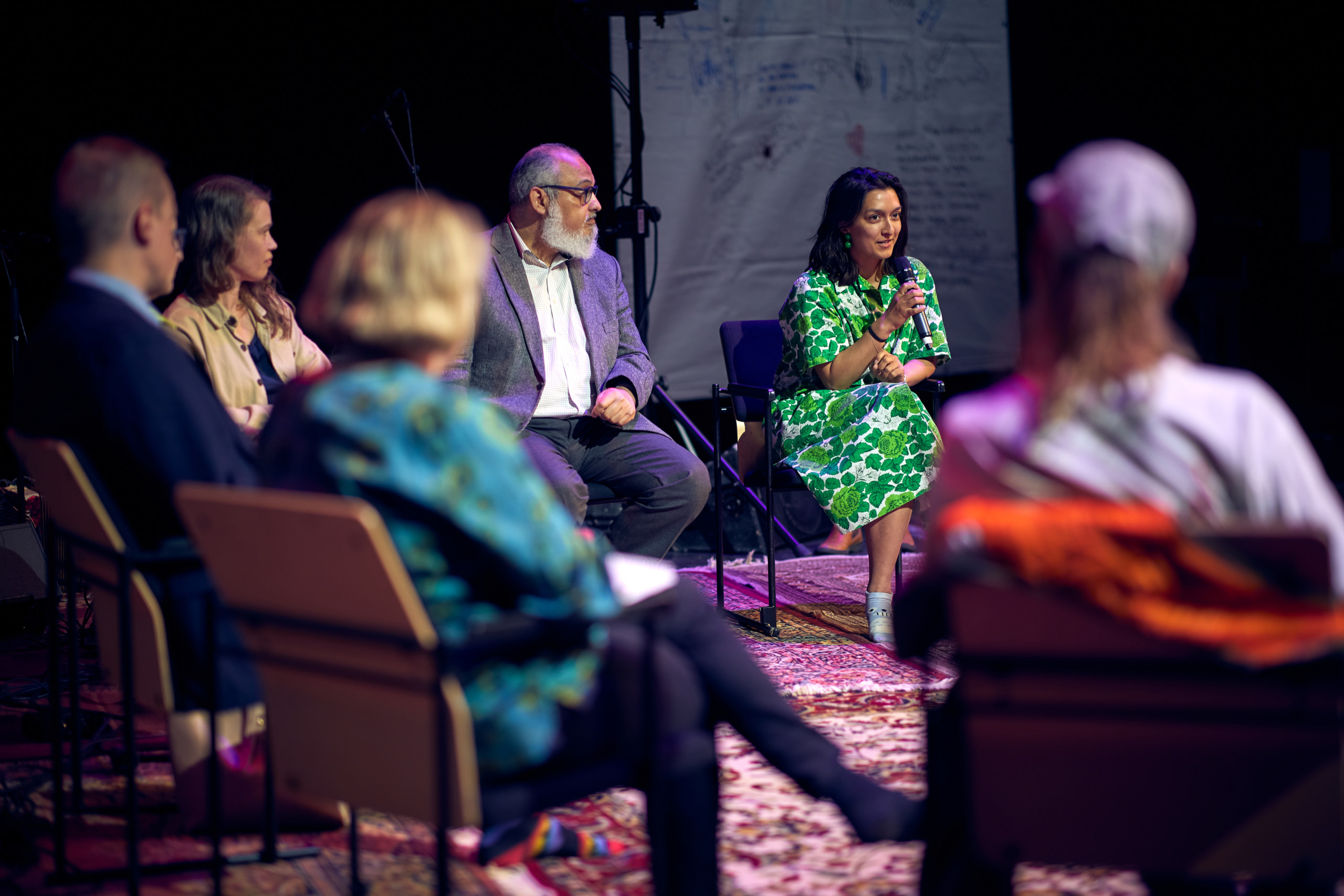
Finally, the conversation returned to talking about nurturing and trust. Hurula wondered whether Helsinki’s history is dominated by a nanny society that neither dares nor knows how to trust in the ability of citizens to create their own city. Sara Zaman highlighted the different practices of care that many environmental activists and artists apply in their work, and asked whether urban planners could acknowledge these practices and take them into account in their work? Or is there something in the work of planners that prevents them from being aware of or bringing into their work how much they care about the environments they are planning? Incorporating care, trust and genuine participation in planning could be a means of creating the soul of the city together with citizens in the sustainability transition.
The panellists were asked to name one or more songs that give them strength in their work. We put them together in a playlist, which we hope will bring strength to many other people, too.
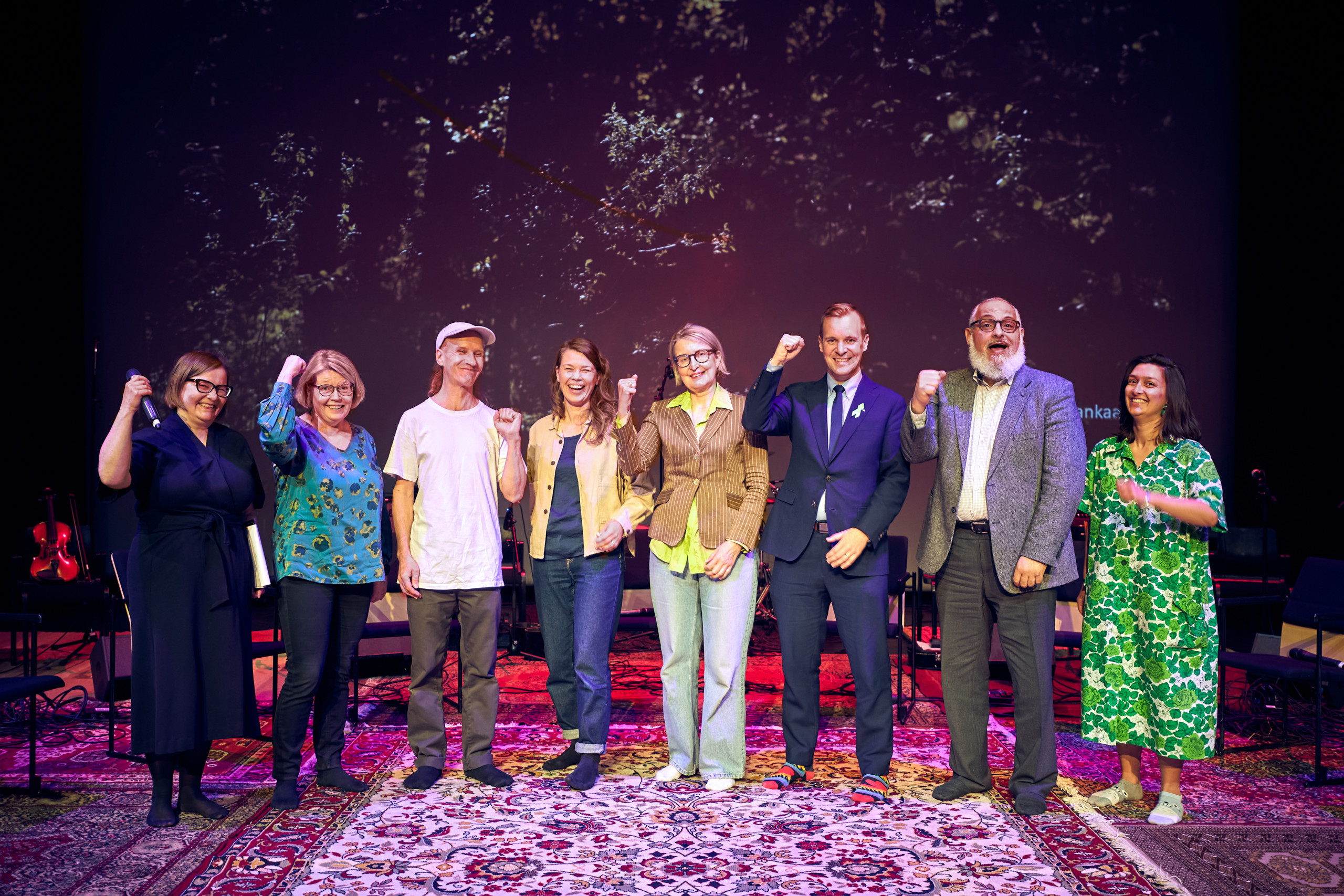
After the panel discussion, the evening continued with a public rehearsal by the Chicago Boys band, in which the audience also participated. The songs related to the themes chosen jointly by the band members were: Tuuli se taivutti koivun larvan, Bella Ciao, Aman hey Aman, a Kalevala-inspired song for endangered mosses, and Rock around MatokallioRock.
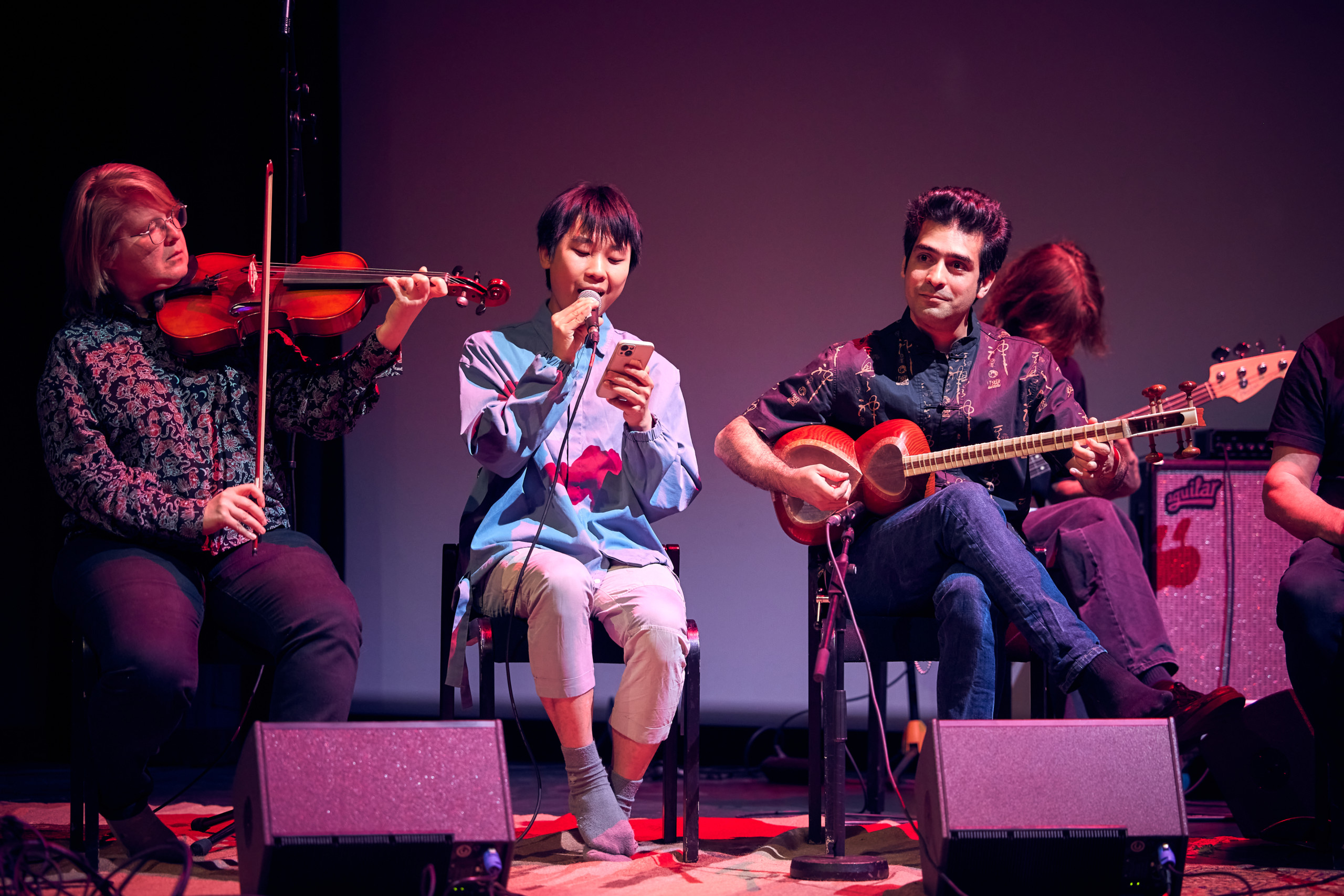
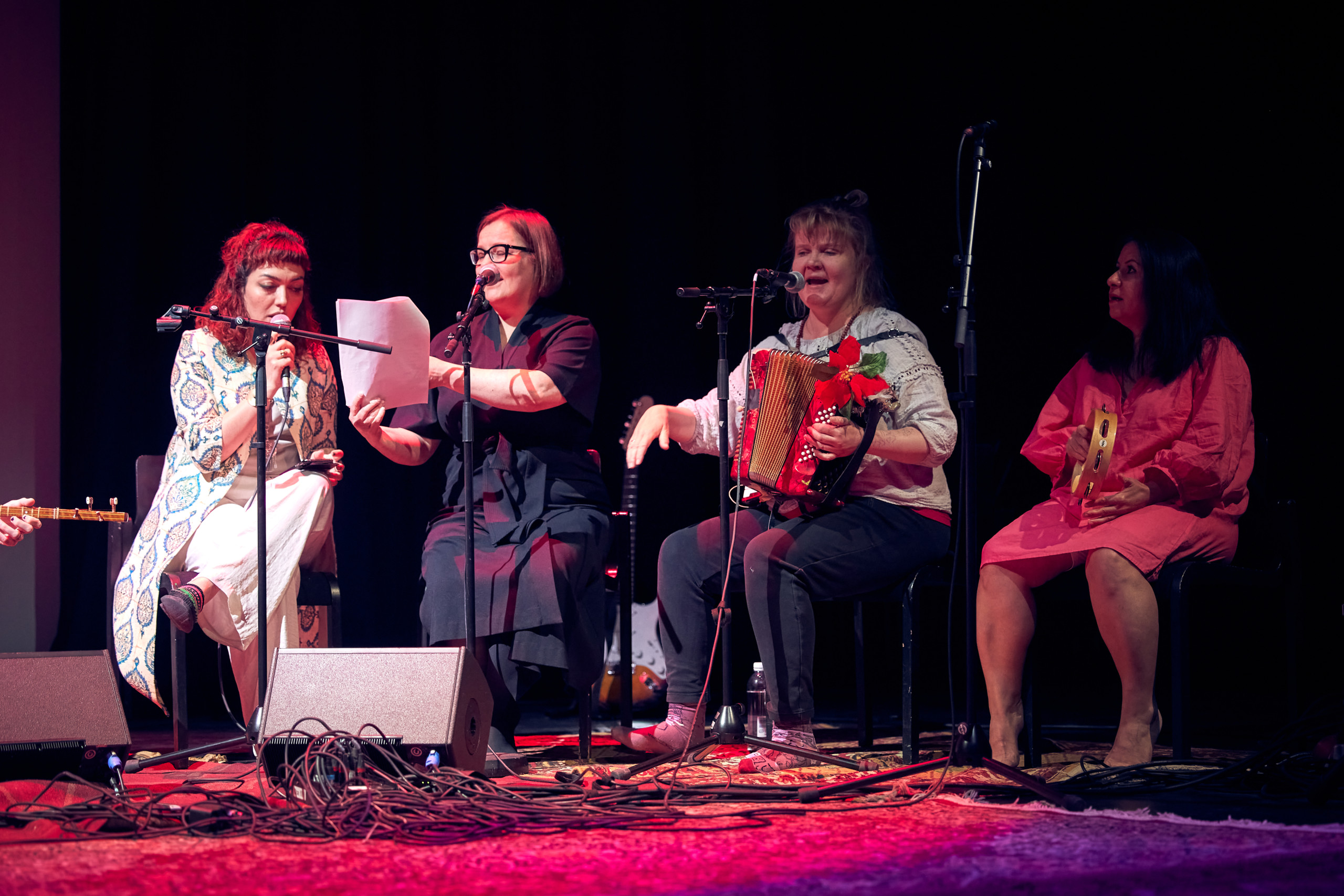
Thanks to everyone involved in the project and Stoa Cultural Centre for their cooperation. IHME Helsinki Commission 2023 has ended for now, but we will be publishing the entire panel discussion and a short video documentary about the whole project on IHME Helsinki’s YouTube channel.
